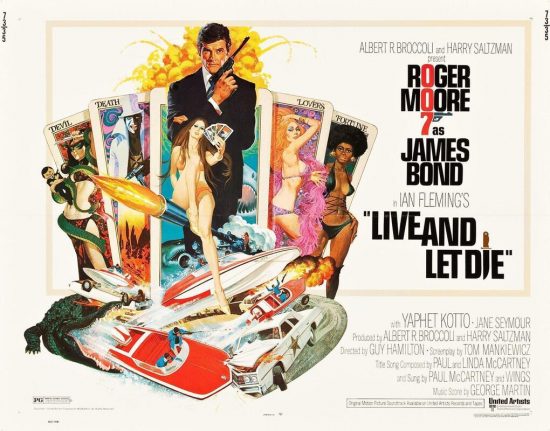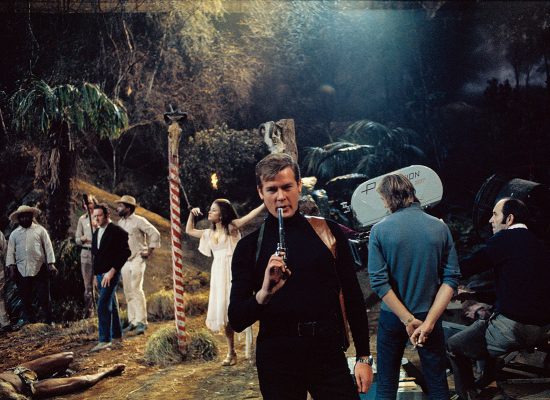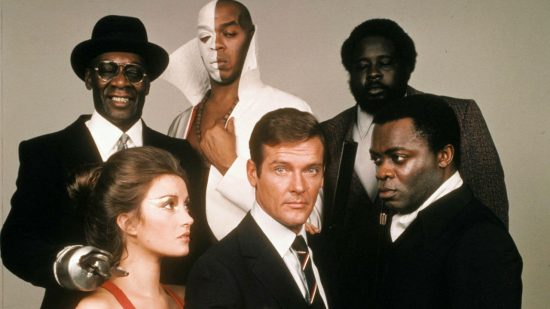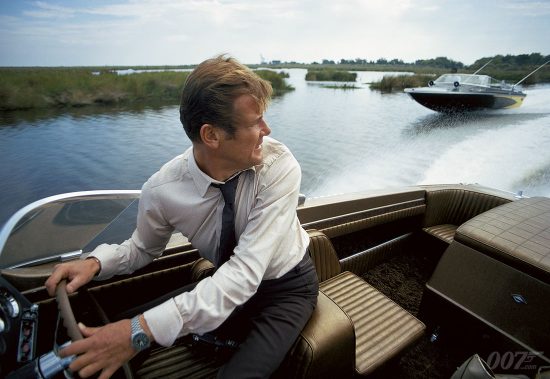Bond Blog: Live and Let Die – A James Bond Retrospective
Roger Moore had been in the running for Bond right at the very beginning of the series from Dr. No, but his commitment to The Saint got in the way. With Connery out of the picture definitively and Lazenby proving a bust, the studio wanted an American to play the part with Burt Reynolds actively courted. Fortunately, Reynolds thought it was a British part and the producers agreed and Moore was ultimately cast. Live and Let Die was to be his first of seven appearances as James Bond.
Bond was definitively changing. The 70s were here with disco, rock n roll, drugs and the hangover from the 60s kicking in. As ever Bond wanted to remain topical, but was never going to be cutting edge so there was always something of a lag. The theme song was written and recorded by Paul and Linda McCartney, and is an unadulterated rock song, featuring heavily in a George Martin score. Forgotten the quip about The Beatles in Goldfinger. The film itself dips strongly into Blaxploitation – Shaft had been released two years earlier in 1971 – mixing voodoo with inner-city panic and hard drugs. Writer Tom Mankiewicz adapted the character, taking out Connery’s dangerousness and replacing it with a sardonic eyebrow-raising lightness. The homicidal dad jokes now leak into the dialogue at any point, with any available pun up for grabs: ‘That really is a Felix lighter!’ Although Q is out of the picture, the gadgets are still ludicrous, with the exploding bullet creating a truly weird ending to the film.
When three agents are killed, Bond is called in to investigate Kananga (Yaphet Kotto), the dictator of the island of San Monique. His investigations lead him to a Harlem gangster Mr. Big who tries to have him killed but Bond escapes and flies to Monique to continue his investigation, tricking Solitaire (Jane Seymour), Kananga’s personal fortune teller, into sleeping with him. Together, they escape. There are thrills and chases galore before the truth is revealed that Kananga and Mr. Big are one and the same and the voodoo is all part of hiding huge heroin plantations. There’s a shark, alligators and then Kananga turns into a balloon and overinflates and pops.
Personally, Roger Moore was my Bond. The first 007 film I saw at the cinema was For Your Eyes Only and the TV premieres of Live and Let Die in January of 1980 and The Spy Who Loved Me were big deals, the former holding a record for the most-watched movie on TV for many years. Moore was a familiar presence from TV both in The Saint and then later in The Persuaders. And he was a comedy Bond, a light-hearted version of the secret agent who made no pretence to actual espionage and the license to kill aspect was a serious as a Road Runner cartoon. But the Moore Bonds have not aged well. Part of the reason for this is the comedy. Although Guy Hamilton had once more returned to direct, this is a far cry from the humour of Goldfinger. Live and Let Die tries to be funny throughout, but Moore is not a good actor and that means necessarily that he is a terrible comic actor. Connery was far funnier when he wanted to be. Moore’s double entendres are louche but rarely witty. And there’s nothing as outrageous as Pussy Galore! The comedy will become increasingly similar to the Carry On… series, taking over the tradition of postcard smut. Moore undoubtedly looks good, as a former knitwear model you’d expect nothing less – and he looks younger than Connery, though in fact, he was three years older. This is a bizarre fact. Connery looked too old for Diamonds Are Forever. Moore (three years older remember) will be playing Bond in 1985, fourteen years after Diamonds. Of course, Connery will return, once he realizes that age is not an issue, but he really shouldn’t have.
But the positives. Moore is suave and looks good when smoking a cigar. Even his gun barrel turn looks like a catwalk model striking a pose. Blue Steel perhaps. Then there are the set pieces which are all very well done, with the boat chase being a particular highlight. The introduction of comic relief in the form of Sheriff JW Pepper (Clifton James) is a worrying sign of where the franchise is going – and will in fact return in the next film, to stultifying effect. There is a lot of fun in the film, but you have to squint to see it; and also to avoid a lot of the more dated aspects of the film’s racism and sexism.













